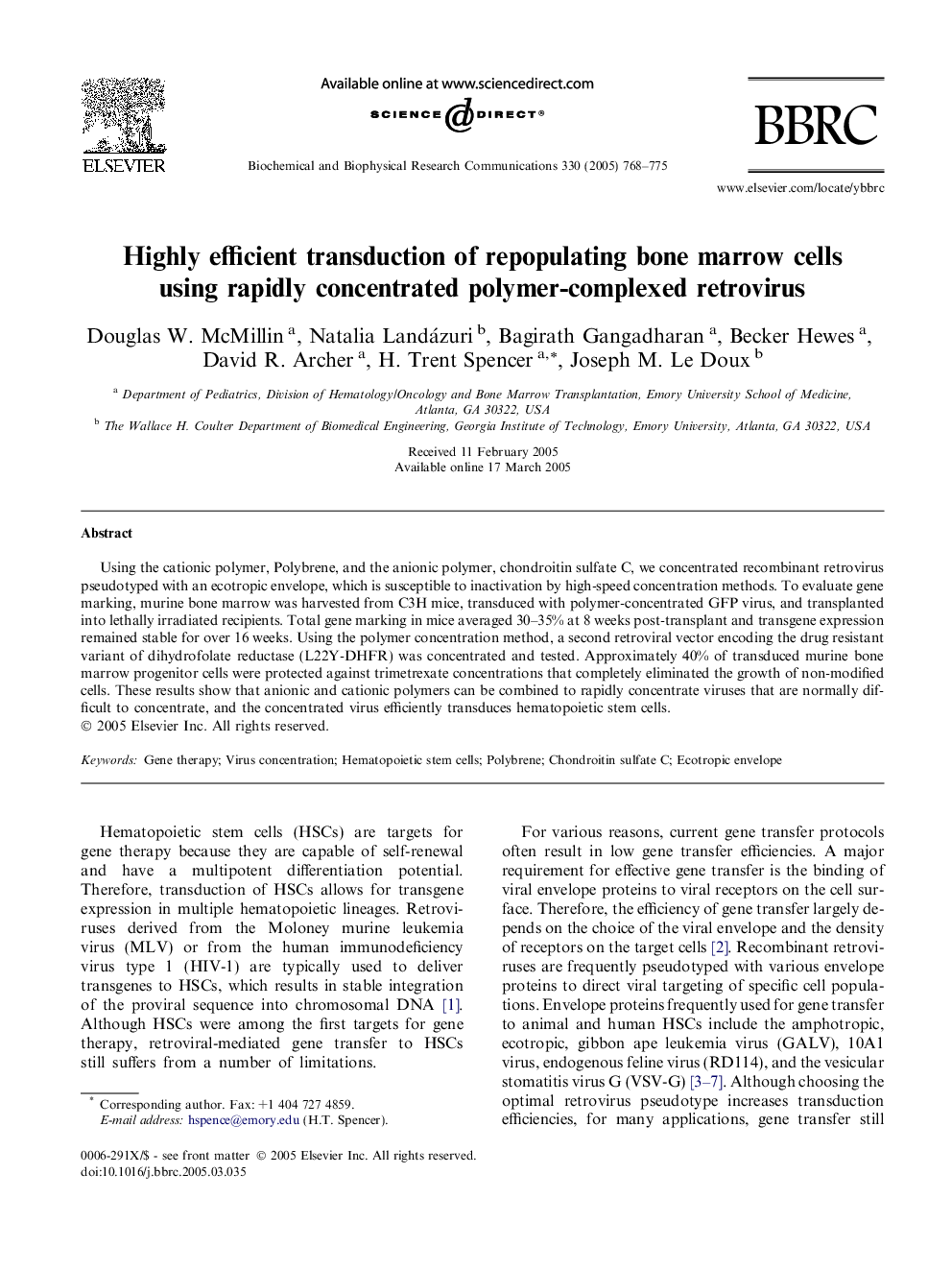| Article ID | Journal | Published Year | Pages | File Type |
|---|---|---|---|---|
| 10770256 | Biochemical and Biophysical Research Communications | 2005 | 8 Pages |
Abstract
Using the cationic polymer, Polybrene, and the anionic polymer, chondroitin sulfate C, we concentrated recombinant retrovirus pseudotyped with an ecotropic envelope, which is susceptible to inactivation by high-speed concentration methods. To evaluate gene marking, murine bone marrow was harvested from C3H mice, transduced with polymer-concentrated GFP virus, and transplanted into lethally irradiated recipients. Total gene marking in mice averaged 30-35% at 8 weeks post-transplant and transgene expression remained stable for over 16 weeks. Using the polymer concentration method, a second retroviral vector encoding the drug resistant variant of dihydrofolate reductase (L22Y-DHFR) was concentrated and tested. Approximately 40% of transduced murine bone marrow progenitor cells were protected against trimetrexate concentrations that completely eliminated the growth of non-modified cells. These results show that anionic and cationic polymers can be combined to rapidly concentrate viruses that are normally difficult to concentrate, and the concentrated virus efficiently transduces hematopoietic stem cells.
Related Topics
Life Sciences
Biochemistry, Genetics and Molecular Biology
Biochemistry
Authors
Douglas W. McMillin, Natalia Landázuri, Bagirath Gangadharan, Becker Hewes, David R. Archer, H. Trent Spencer, Joseph M. Le Doux,
